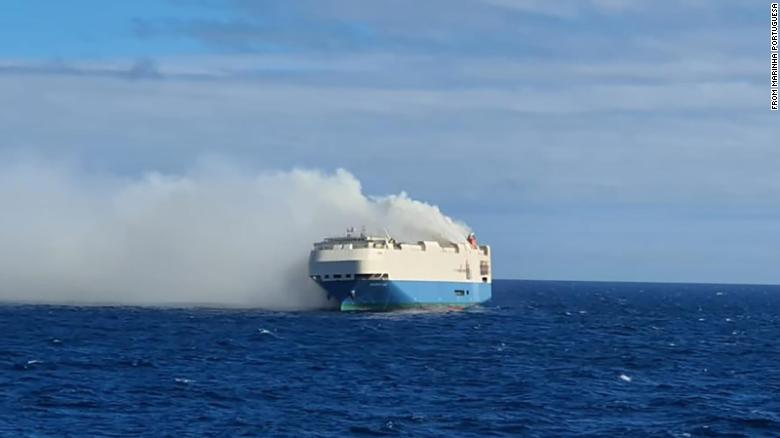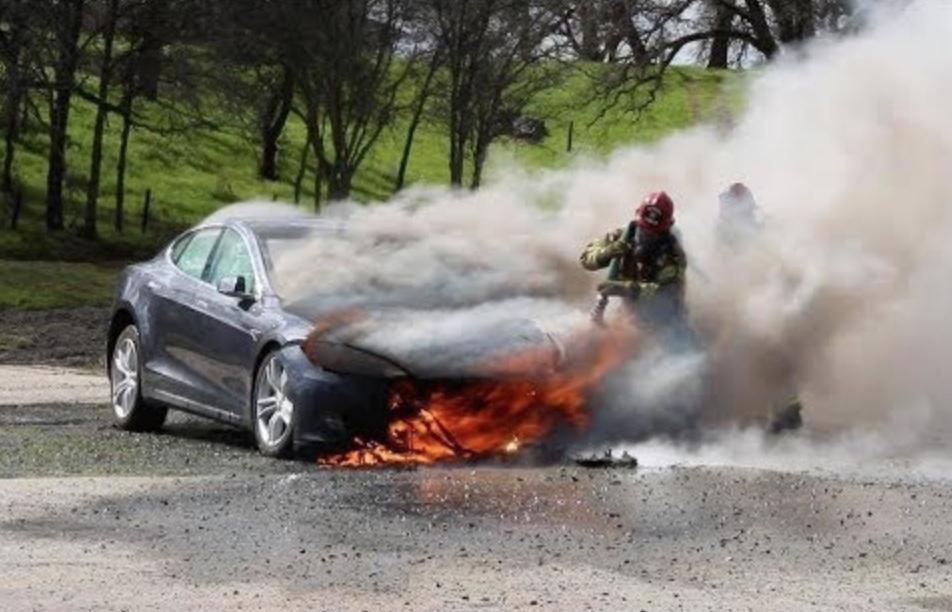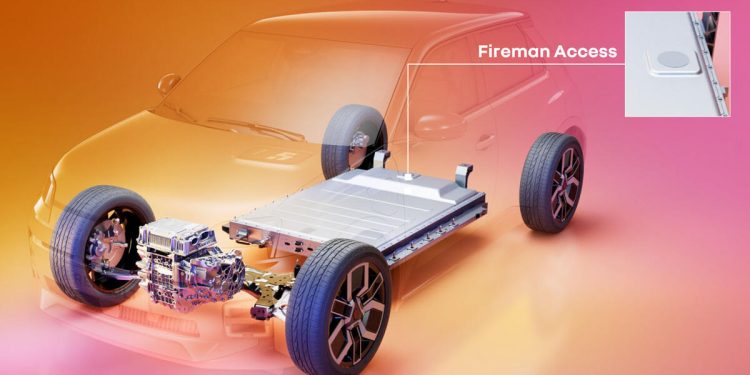Renault shares EV fire suppression tech
Words NZ Autocar | Images Autocar UK,
French car company Renault’s smart Fireman Access device means an EV fire can be extinguished as easily as that in an ICE vehicle.
The secret is a removable disc in the battery casing that allows water to reach the cells quickly in the event of a fire.

Fires caused by EV batteries can have catastrophic consequences. One such fire on a ship led to the loss of 4000 mainly VW Group vehicles a few years back.
Renault has come up with a surprisingly simple solution. It has developed a fire suppression system for EVs that reduces the time and water needed to extinguish battery blazes. Moreover, the company is sharing it with all other vehicle manufacturers.
The Fireman Access system is now fitted to all electric and plug-in hybrid Renault models. It means electric vehicle fires can be extinguished in much the same time as with a combustion vehicle.
The adhesive disc in the vehicle’s battery is designed to dislodge under the pressure of a fire hose. That then allows water to quickly spread to all the cells inside. Renault reckons it is the quick and effective means of stopping thermal runaway.

Evidently an electric vehicle battery fire can then be extinguished in a few minutes. That compares with several hours using current methods. It apparently uses 10 times less water too.
The Renault Group is now making the patents freely available to the wider automotive industry so other companies can use it themselves.
Electric vehicles are much less likely to catch fire than combustion vehicles. However, they’re harder to extinguish because the chemical blaze doesn’t require oxygen. That makes the traditional suffocation method of fire control ineffective.
Moreover, a battery fire releases toxic gases and can reignite without warning. That’s why burned-out EVs must be stored far away from other vehicles and buildings.
Renault Group CEO Luca de Meo said: “Today, I’m delighted to be making this innovation freely available, because when it comes to a subject like safety, we need to break down all the barriers. This move is also in keeping with the commitment made alongside the United Nations to make mobility safer, all over the world.”





